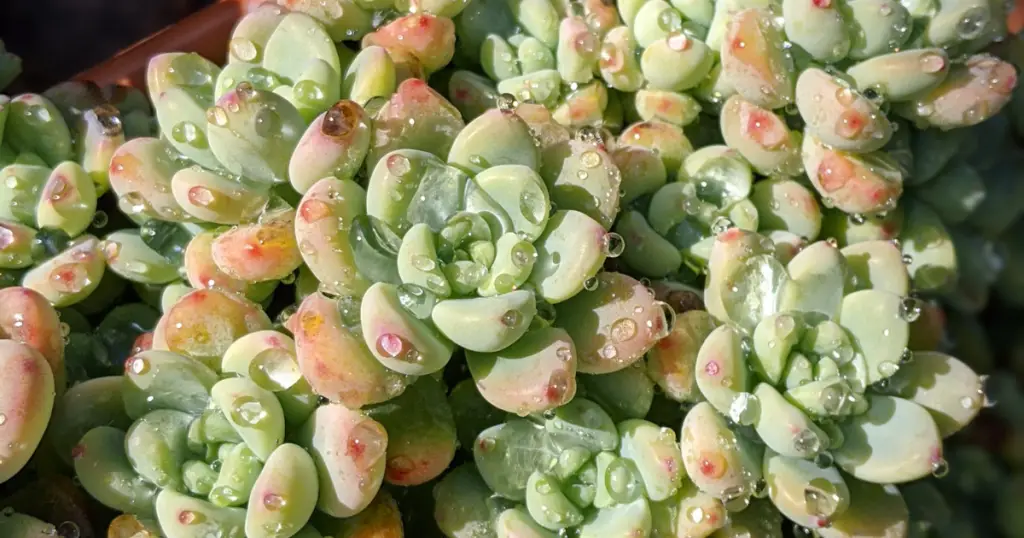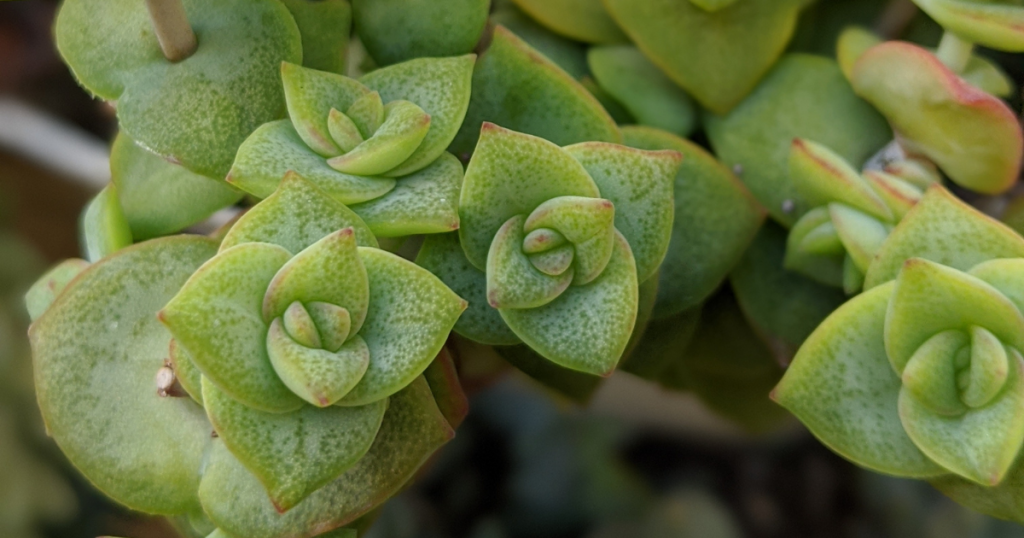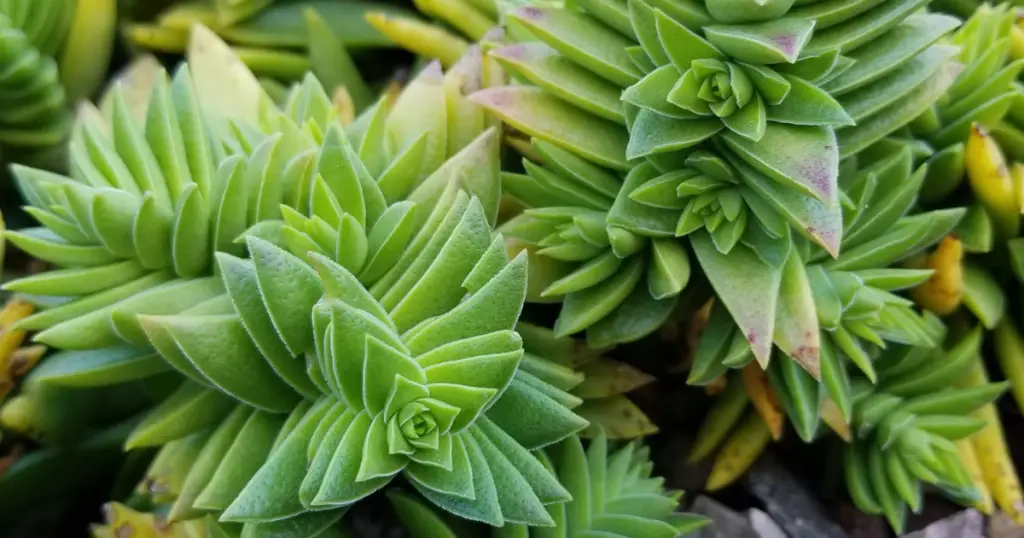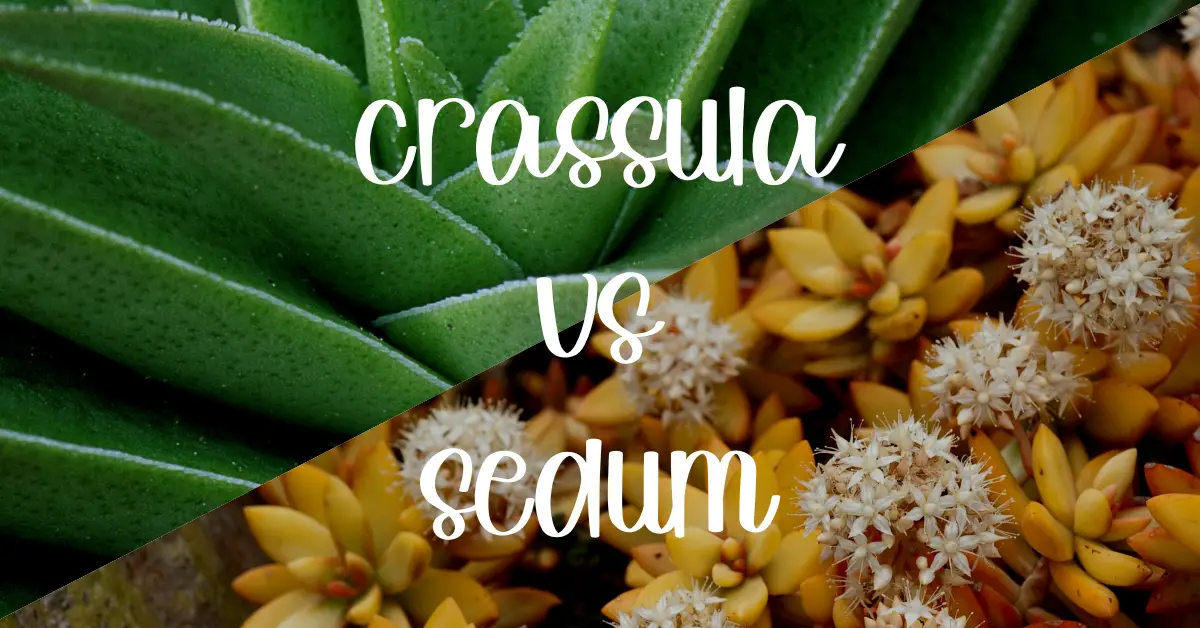
It can be hard to tell them apart at first glance. In this blog post, we’ll go over the key differences between Crassula and Sedum, as well as provide tips on how to care for each type.

What is Crassula?
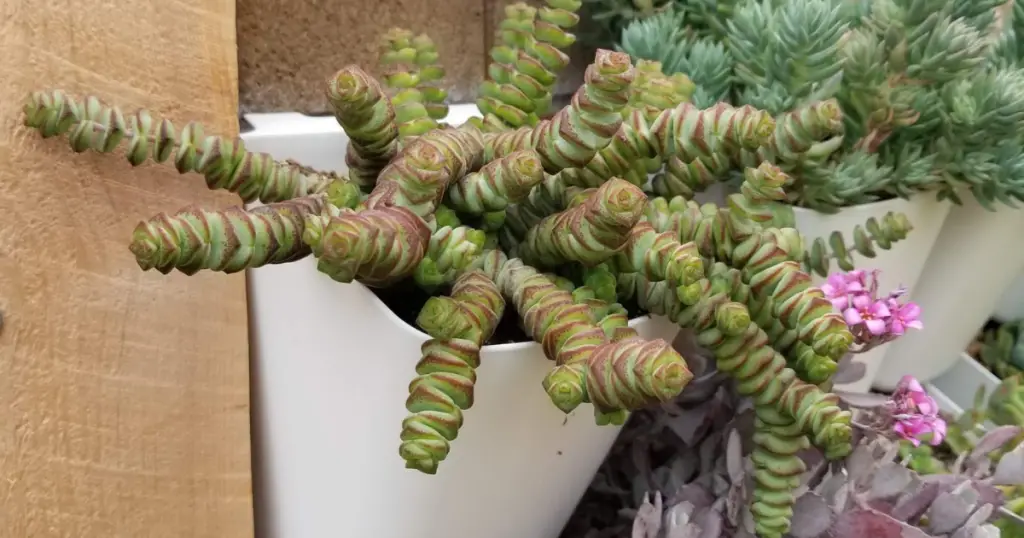
Crassula is a large genus of succulent plants that is native to South Africa. These plants are known for their thick, fleshy leaves and compact growth habit. They come in a wide range of shapes, sizes, and colors, making them a versatile and popular choice for indoor and outdoor gardens. Some popular varieties include the ‘Jade Plant’, ‘Gollum’, and ‘Hobbit’.
You might like: 5 Essential Mental Health Benefits of Gardening Succulents and Cacti

You might also like: Do succulents need sun?
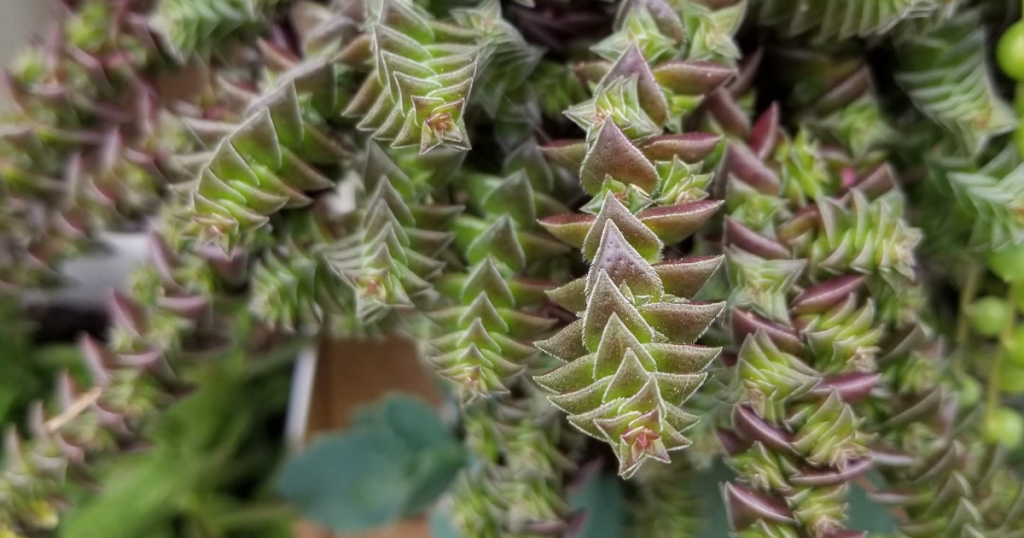
What is Sedum?

Sedum is a genus of flowering succulent plants that is native to a wide range of regions, including North America, Europe, and Asia. These plants are known for their thick, fleshy leaves and their ability to withstand harsh weather conditions. Sedums come in a variety of shapes and sizes, with some species having a trailing growth habit and others being more upright. Some popular varieties of Sedum include Sedum morganianum ‘Burrito’, Sedum reflexum ‘Blue Spruce’, and Sedum nussbaumeranium.
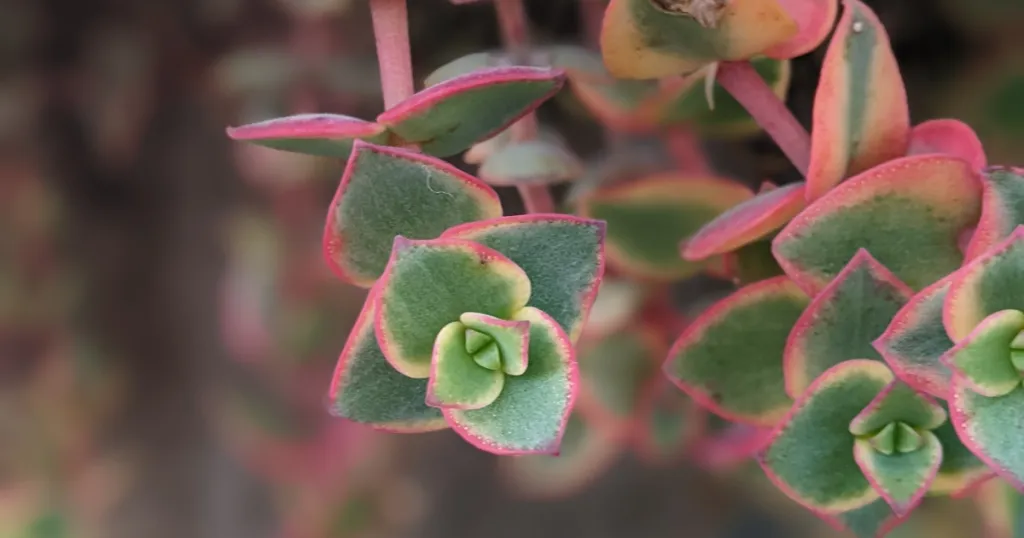
You might like: The Best Way to Water Succulents

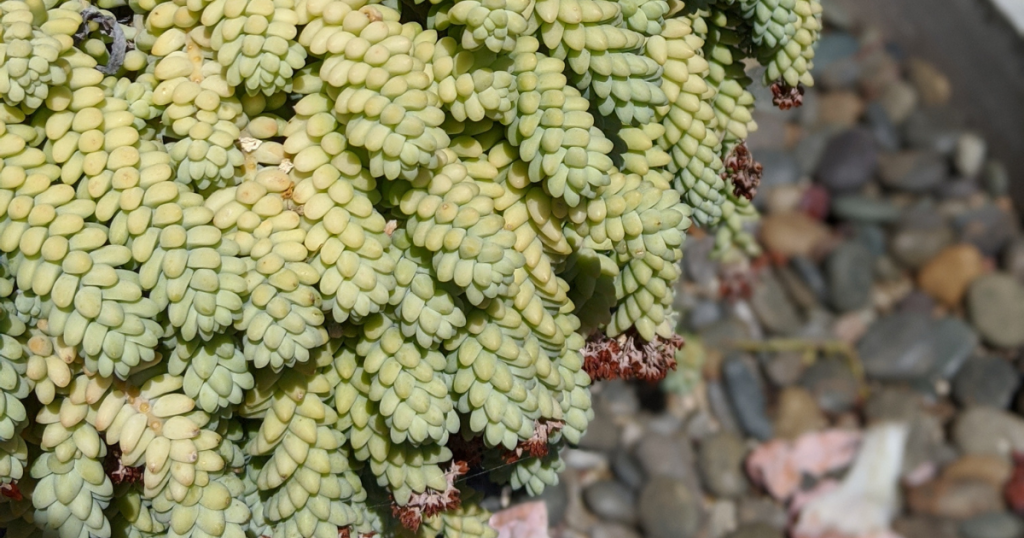

Where to Buy Succulents Online

Differences between Crassula and Sedum
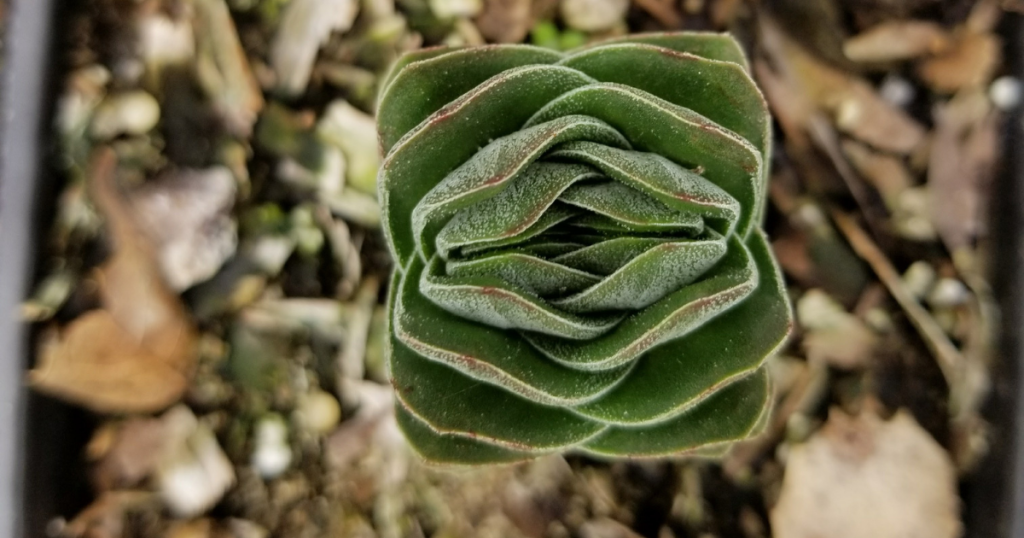
So, how can you tell the difference between Crassula and Sedum? Here are a few key points to keep in mind:
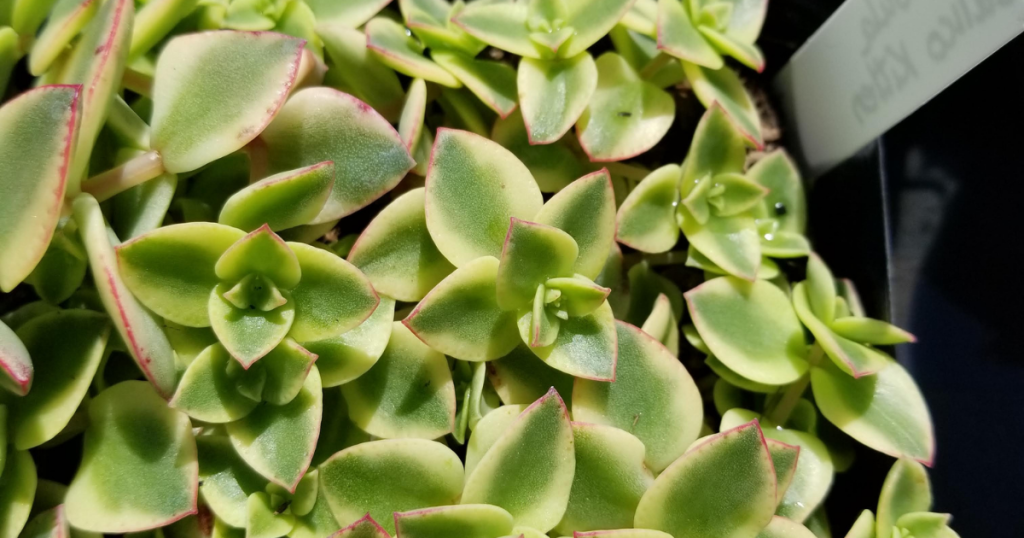
Native Habitat
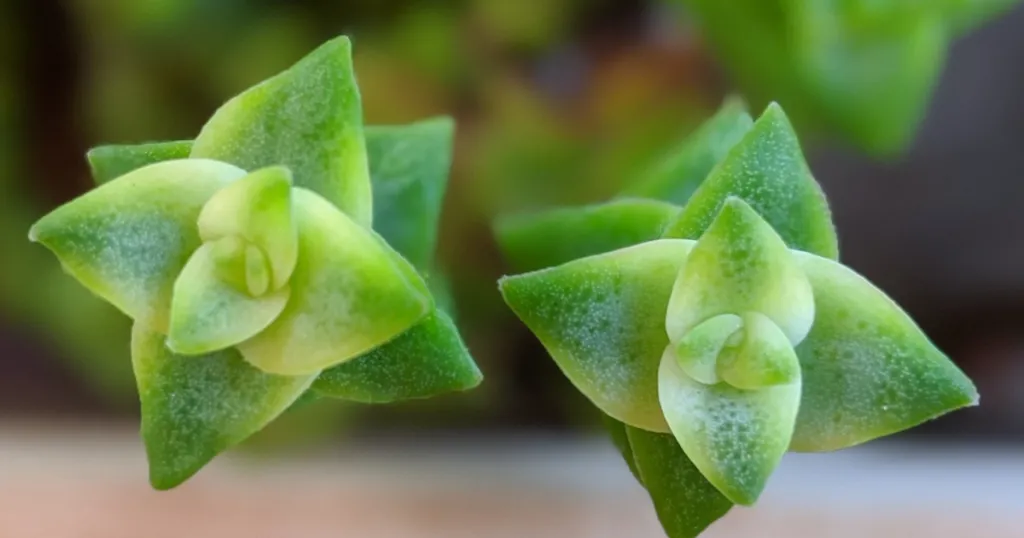
Crassula is indigenous to South Africa and neighboring countries, while Sedum is native to a wider range of regions that extends beyond South Africa. Sedum can be found in various parts of the world, including Asia, Europe, North America, and South America, among others. This information can come in handy when trying to identify a plant without access to any other information. For instance, if you come across a succulent with thick, fleshy leaves, and you’re not sure whether it is a Crassula or a Sedum, knowing the native regions of the two plants can be a helpful clue in your identification process.
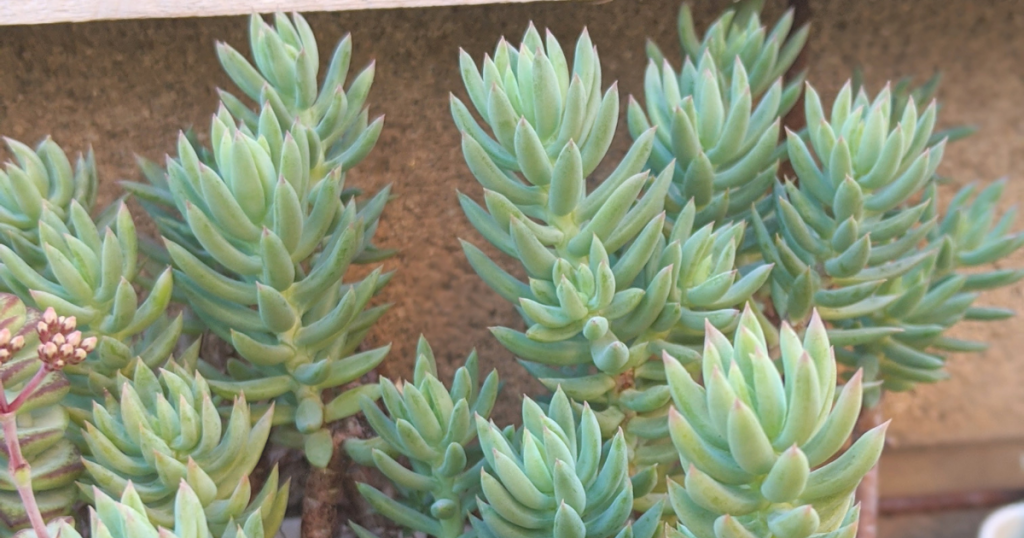
Appearance
One of the most notable differences between the Crassula and Sedum is their appearance. Crassula typically has thick, fleshy leaves that grow in an alternating pairs formation, and some species may also produce colorful blooms. On the other hand, Sedum has more varied leaf shapes and colors, ranging from tiny, round leaves to flat, oval-shaped leaves, and their leaves may or may not be fleshy.
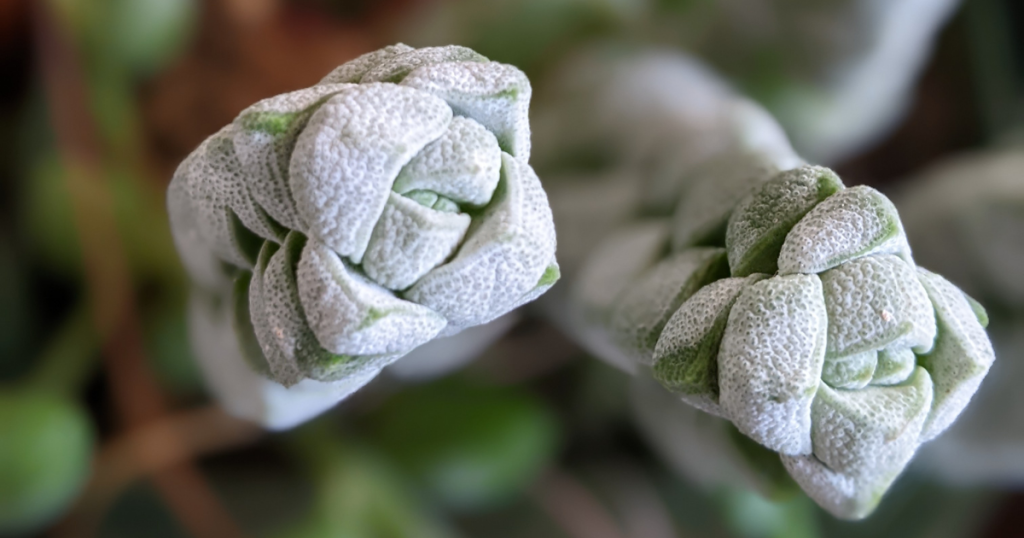
Growth habit
Crassulas typically have a more upright growth habit, with their stems growing upward and their leaves forming in a compact rosette pattern but the leaves grow in alternating pairs around the stem. This growth habit makes them a popular choice for small indoor spaces and rock gardens, as they take up less horizontal space and can add height and structure to a garden.
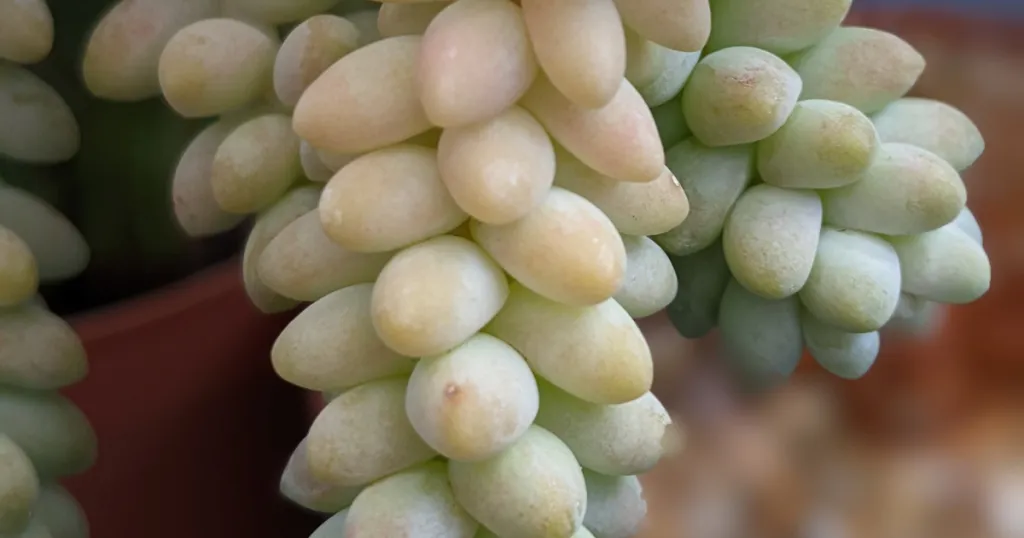
On the other hand, Sedums have a more trailing or sprawling growth habit, with their stems growing outward and downward. This makes them an ideal choice for hanging baskets, groundcovers, and other areas where their trailing habit can be fully appreciated. They are also popular for use in green roofs or living walls as they can spread and cover large areas while tolerating a range of growing conditions.
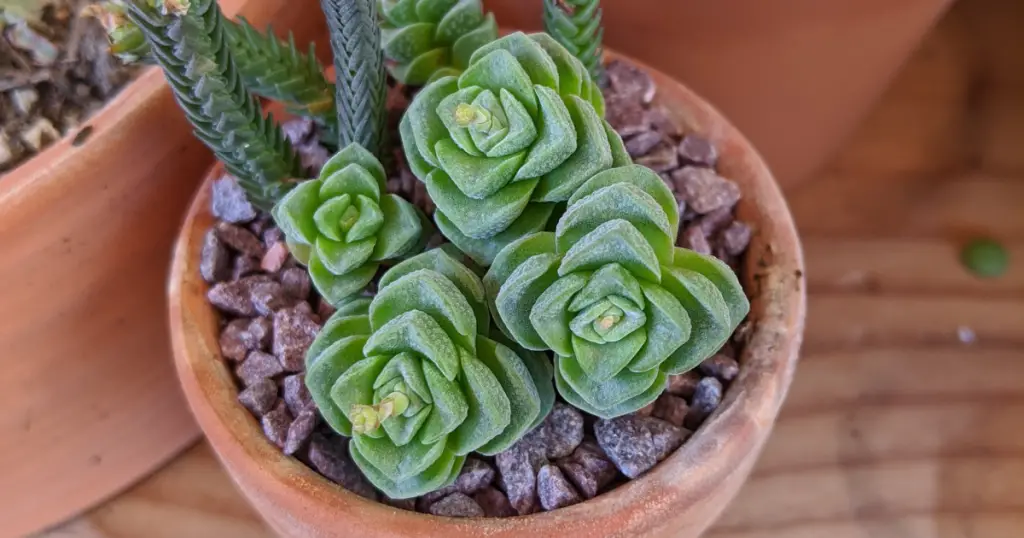
The difference in growth habits between Crassula and Sedum can also influence their care requirements. For example, Sedums with a trailing growth habit may require more frequent pruning or trimming to keep them from overgrowing their intended space, while Crassulas may require more attention to their upright stems to keep them from getting top-heavy and potentially falling over.
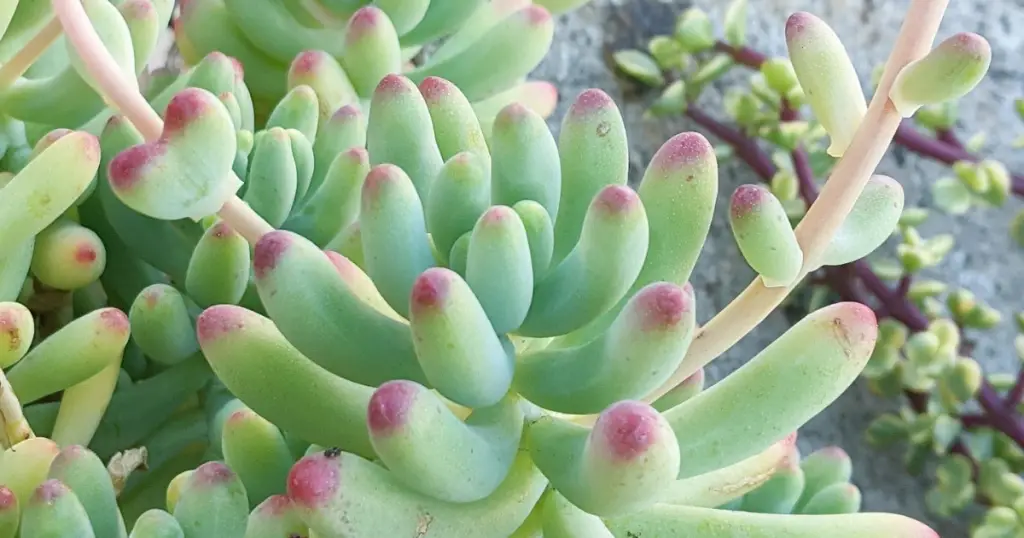
Overall, understanding the growth habits of Crassula and Sedum can help you determine which plants will be the best fit for your garden, taking into account factors such as available space and care requirements.
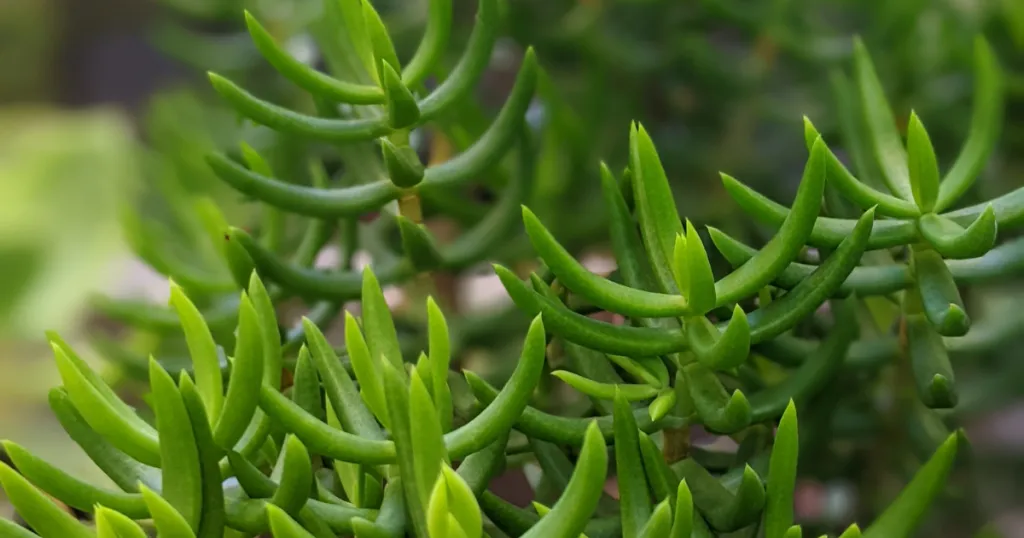
Flowers
While both Crassula and Sedum can produce flowers, there are some noticeable differences between the two genera. For starters, Crassula flowers are generally smaller and come in white or pink hues, whereas Sedum flowers are larger and are known for their vibrant colors, ranging from yellow and pink to red. Crassula flowers are typically star-shaped and composed of 5 petals, while Sedum flowers are generally more complex in shape, with multiple clusters of small flowers arranged in a larger flower head on longer bloom stalks. Additionally, the flowering period of these plants may vary depending on the species, but in general, they tend to bloom during the summer months.
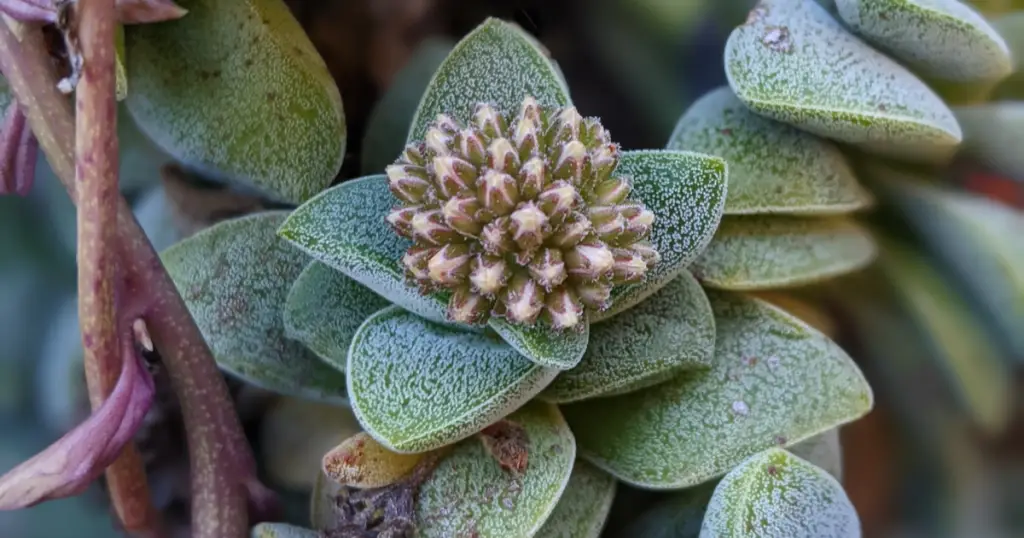
It’s worth noting that while the flowers look different, they both play an essential role in the reproductive cycle of the plant. Flowers are the reproductive organs of a plant, and they are responsible for producing seeds that can give rise to new plants. In some cases, the flowers of succulents can also be used to propagate new plants through a process called vegetative propagation. In this method, cuttings from the plant’s stem or leaves are rooted in soil, and they can produce new plants that are genetically identical to the parent plant.
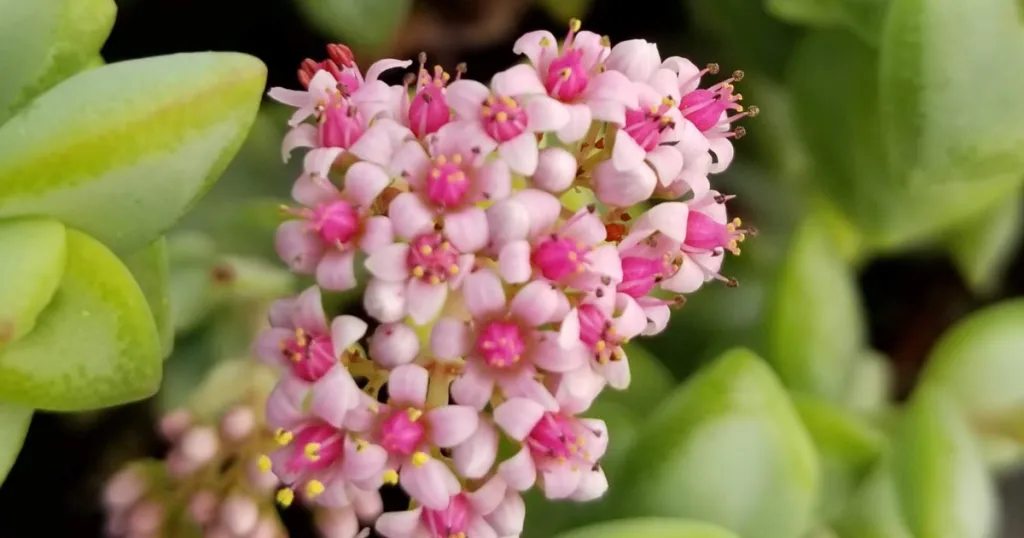

How to Care for Crassula and Sedum
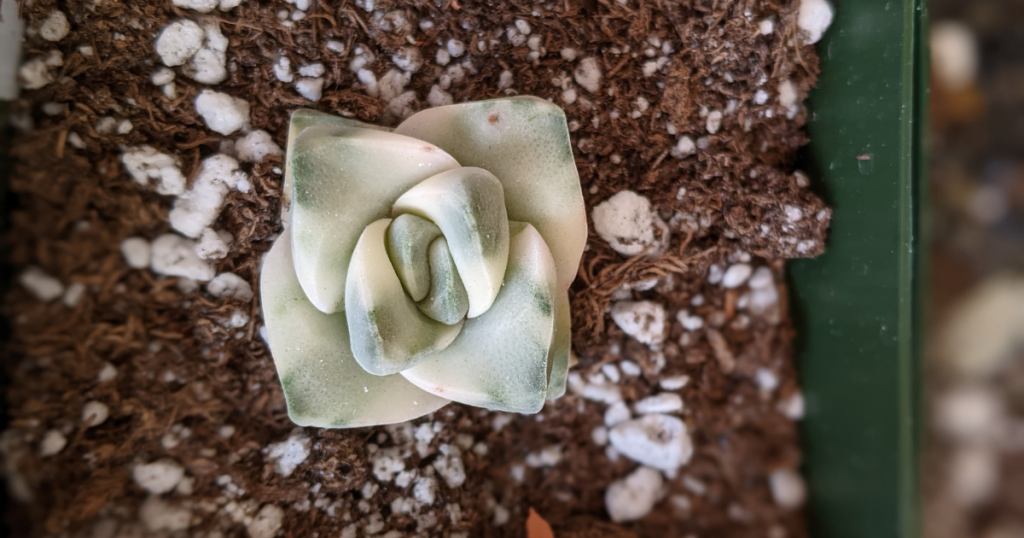
Now that we’ve gone over the differences between Crassula and Sedum, let’s talk about how to care for these plants.

Crassula Care
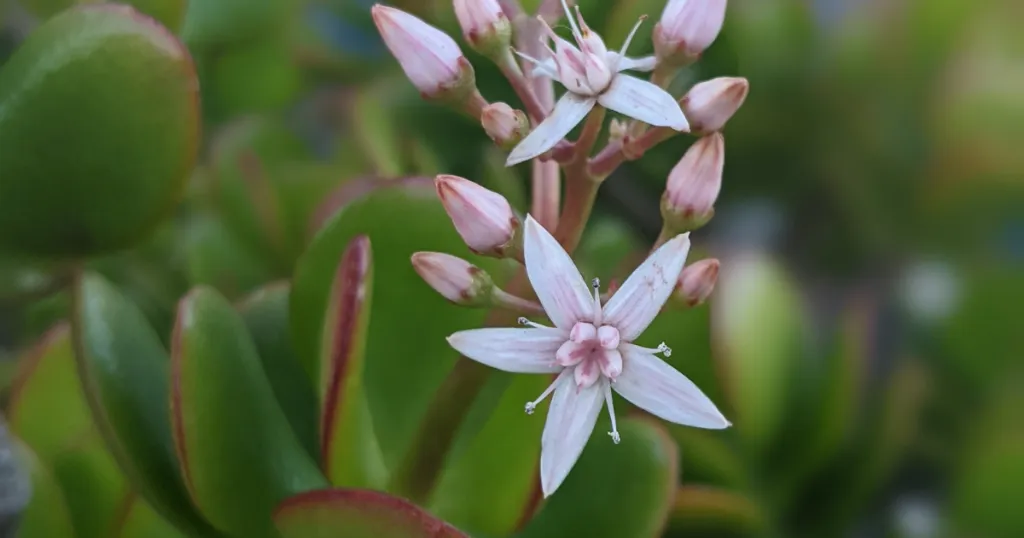
Crassulas are generally easy to care for and make a great choice for beginners. Here are a few tips on how to care for your Crassula:
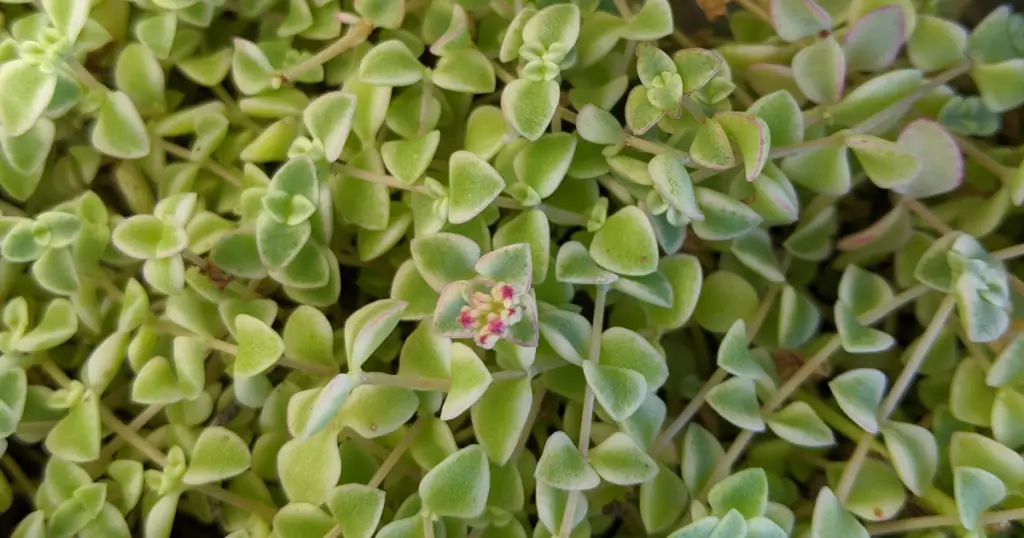
Light
Crassulas are sun-loving plants that thrive in bright, indirect light. They can tolerate some direct sun, but it’s important to provide some shade during the hottest parts of the day to prevent sunburn, especially if they are grown indoors. A south or east-facing window is an ideal location for Crassulas. However, if the plant is grown outdoors, it is crucial to ensure that it is not exposed to extreme temperatures, as this can cause damage to the leaves and stems. Additionally, providing shade during the hottest parts of the day can help prevent the plant from drying out too quickly, as succulents are adapted to conserve water and can be prone to dehydration if exposed to too much direct sun.
Water
Watering your Crassula effectively is key to its growth and health. As a succulent, the Crassula is capable of storing water in its leaves, making it drought-resistant and able to survive long periods without watering. Therefore, it is crucial to water it sparingly, allowing the soil to dry out completely before watering it again. Overwatering your Crassula can lead to root rot, which is detrimental to its growth and can even lead to its demise. To avoid this, be sure to let the soil dry out completely between waterings.
Soil
To ensure the health and growth of your Crassula plant, it’s crucial to use the right soil mix. As a succulent, Crassulas need a well-draining soil that doesn’t retain too much moisture. A cactus soil mix or a mixture of potting soil and perlite or sand is perfect for providing the necessary drainage. The cactus soil mix typically contains sand, perlite, and peat moss and is specifically formulated to allow excess moisture to drain away from the roots. Using the right soil mix ensures that the plant receives the right nutrients and provides enough support for the roots to anchor the plant.
Fertilizer
To promote healthy growth and vibrant foliage, it is important to provide your Crassula with adequate nutrition. During the active growing season, which typically occurs in the spring and summer, fertilizing your plant can provide the necessary nutrients to support healthy growth. However, it is important to use a balanced fertilizer at half strength, as Crassulas do not require high levels of nutrients. Over-fertilization can cause the plant to become burned and damaged, so it is important to follow the instructions on the fertilizer package carefully. Fertilizer can be applied every 2-4 weeks during the growing season, and it is best to avoid fertilizing during the dormant winter months.

Sedum Care
Sedums are also easy to care for and make a great choice for beginners. Here are a few tips on how to care for your Sedum:
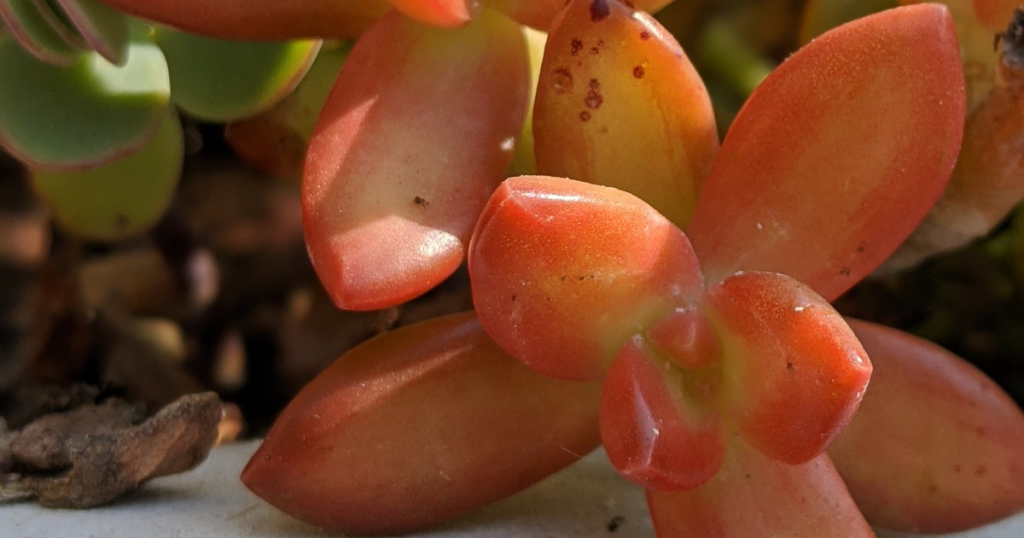
Light
When it comes to providing the right lighting conditions for your Sedums, it’s important to remember that these plants prefer bright, indirect light. This means that they should be placed in a location where they will receive plenty of natural light, but not direct sunlight. While Sedums are generally able to tolerate full sun, it’s important to take steps to prevent sunburn during the hottest parts of the day. This can be achieved by providing some form of shade, either through the use of a sheer curtain or by moving the plant to a location with less direct sunlight.
Water
Watering Sedums requires a delicate balance to prevent over or under-watering. These plants prefer to dry out between watering, so be sure to check the moisture level of the soil before watering. Sedums are drought-tolerant and can survive for long periods without water, making them an excellent choice for those who tend to forget to water their plants. However, it’s important to ensure that the plant is not completely dehydrated, as this can lead to leaf drop or stunted growth. If in doubt, it’s best to err on the side of underwatering rather than overwatering. Once the soil is completely dry, you can water the plant deeply and allow the excess water to drain away.
Soil
When it comes to soil, sedums have relatively low nutritional requirements, but they do require a well-draining soil mix. In their natural habitat, sedums often grow in rocky or sandy soils, which drain quickly and do not retain water for long periods. Choose a soil mix that can provide the necessary drainage to prevent waterlogging, which can lead to root rot. A cactus soil mix is great, as it contains a blend of materials such as sand, perlite, and peat moss that help to promote drainage while retaining some moisture. You can create your own soil mix by combining regular potting soil with sand or perlite to improve drainage.
Fertilizer
When it comes to fertilizing Sedums, it’s important to remember that these plants don’t require a lot of extra nutrients. However, a light feeding during the growing season can help promote healthy growth and vibrant foliage. To fertilize your Sedum, use a balanced, water-soluble fertilizer at half strength. This means using only half the amount of fertilizer recommended on the package. Applying too much fertilizer can cause the plant to become leggy or floppy. It’s best to fertilize your Sedum every 4 to 6 weeks during the growing season, which is typically in the spring and summer. Remember to always follow the instructions on the fertilizer package carefully to avoid over-fertilization, which can be harmful to the plant.
